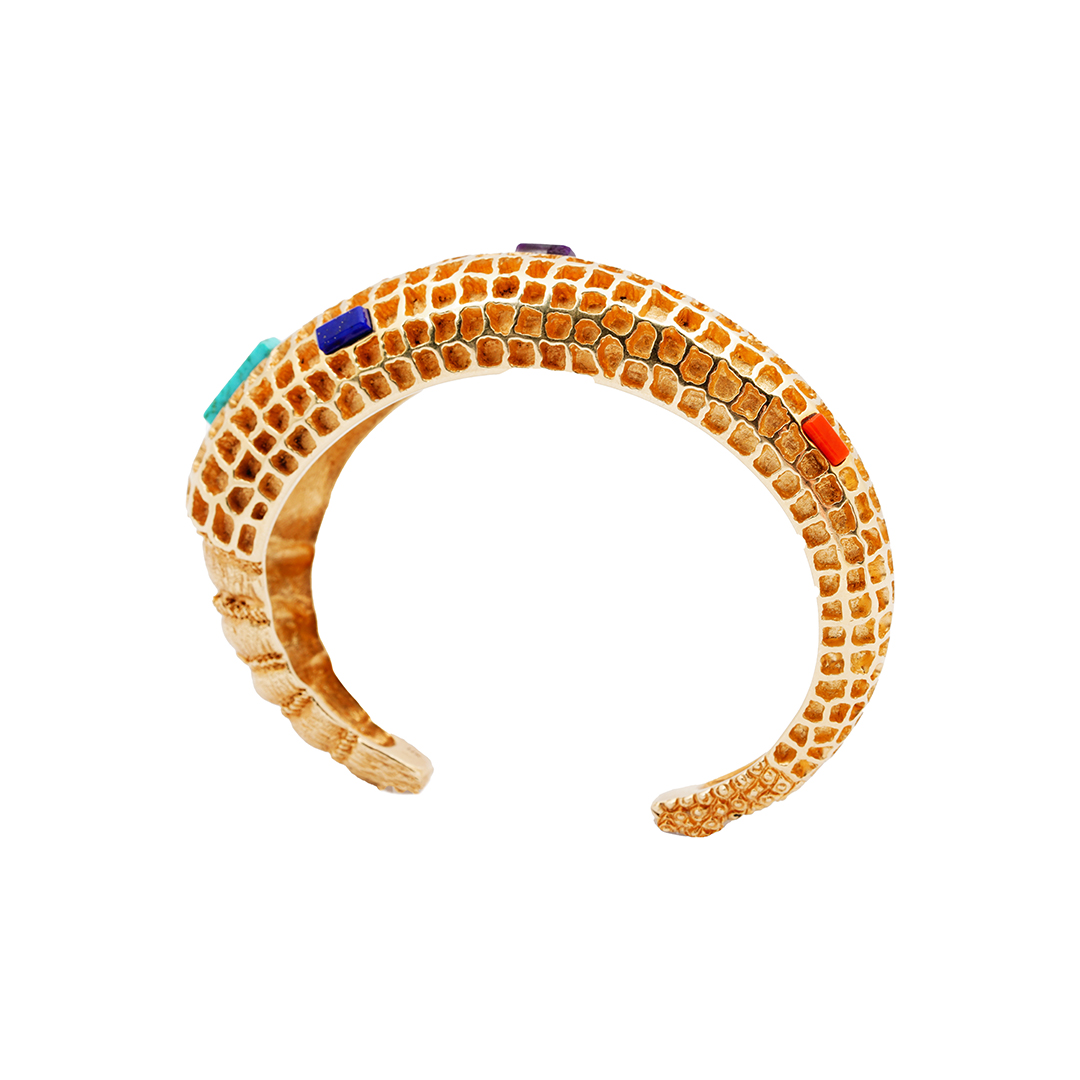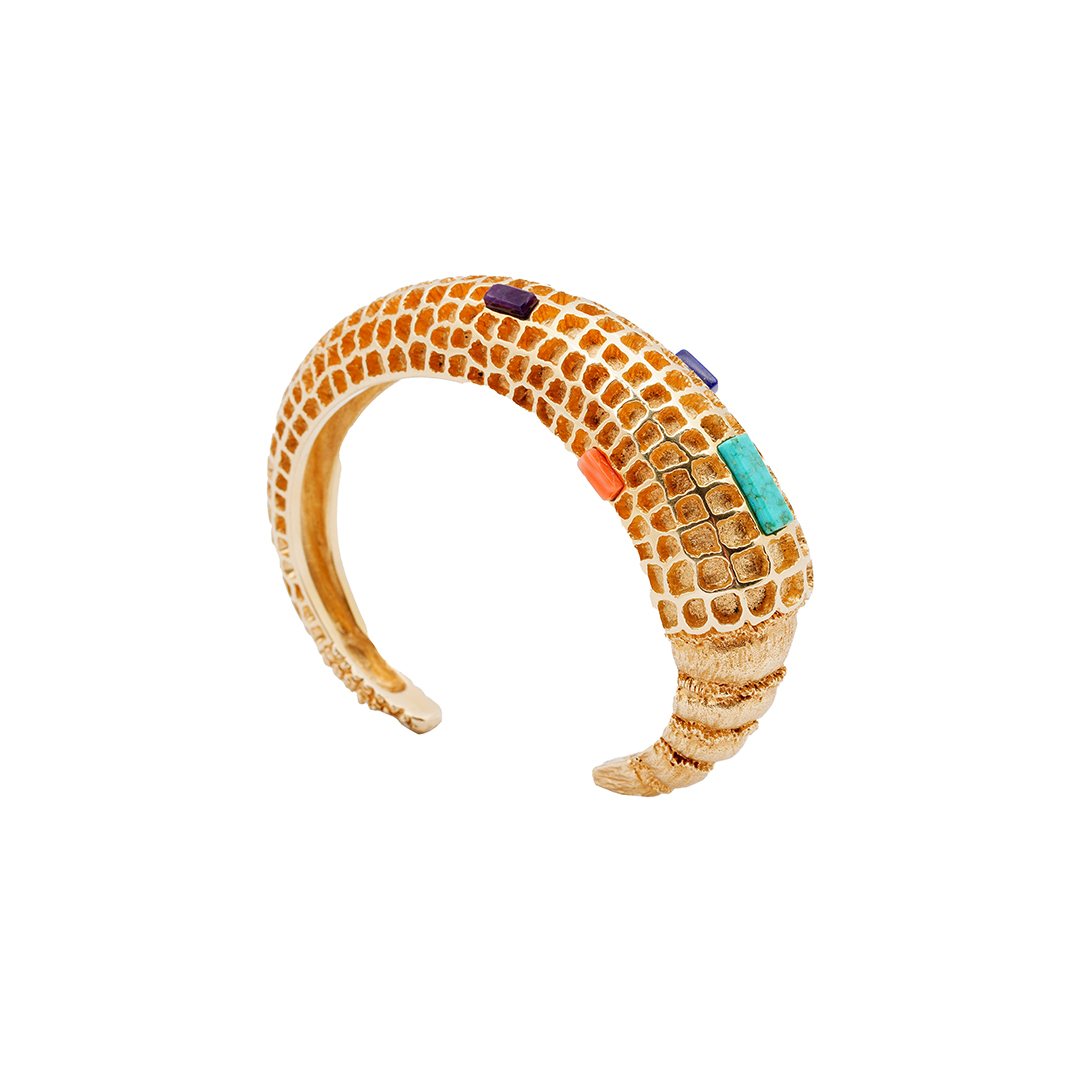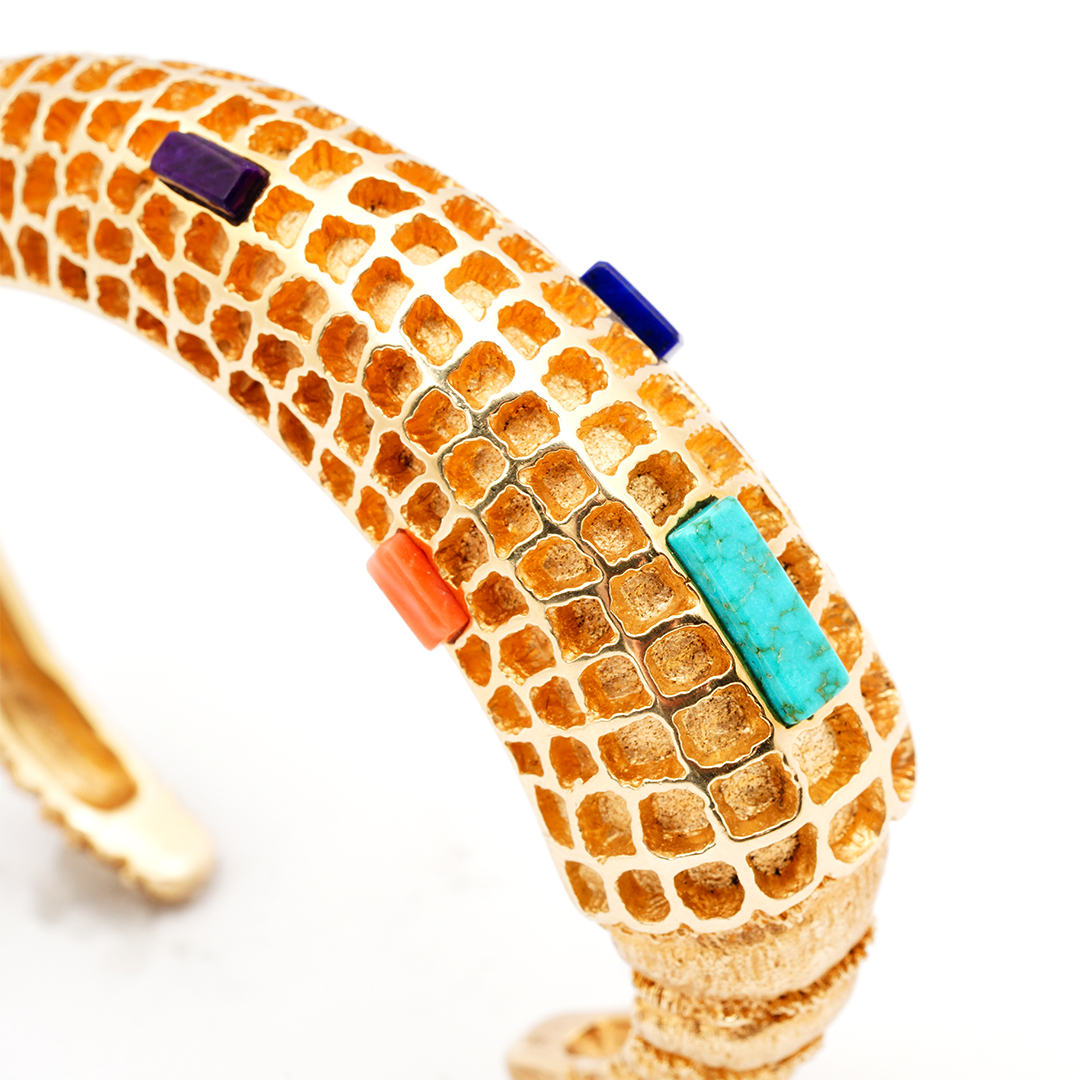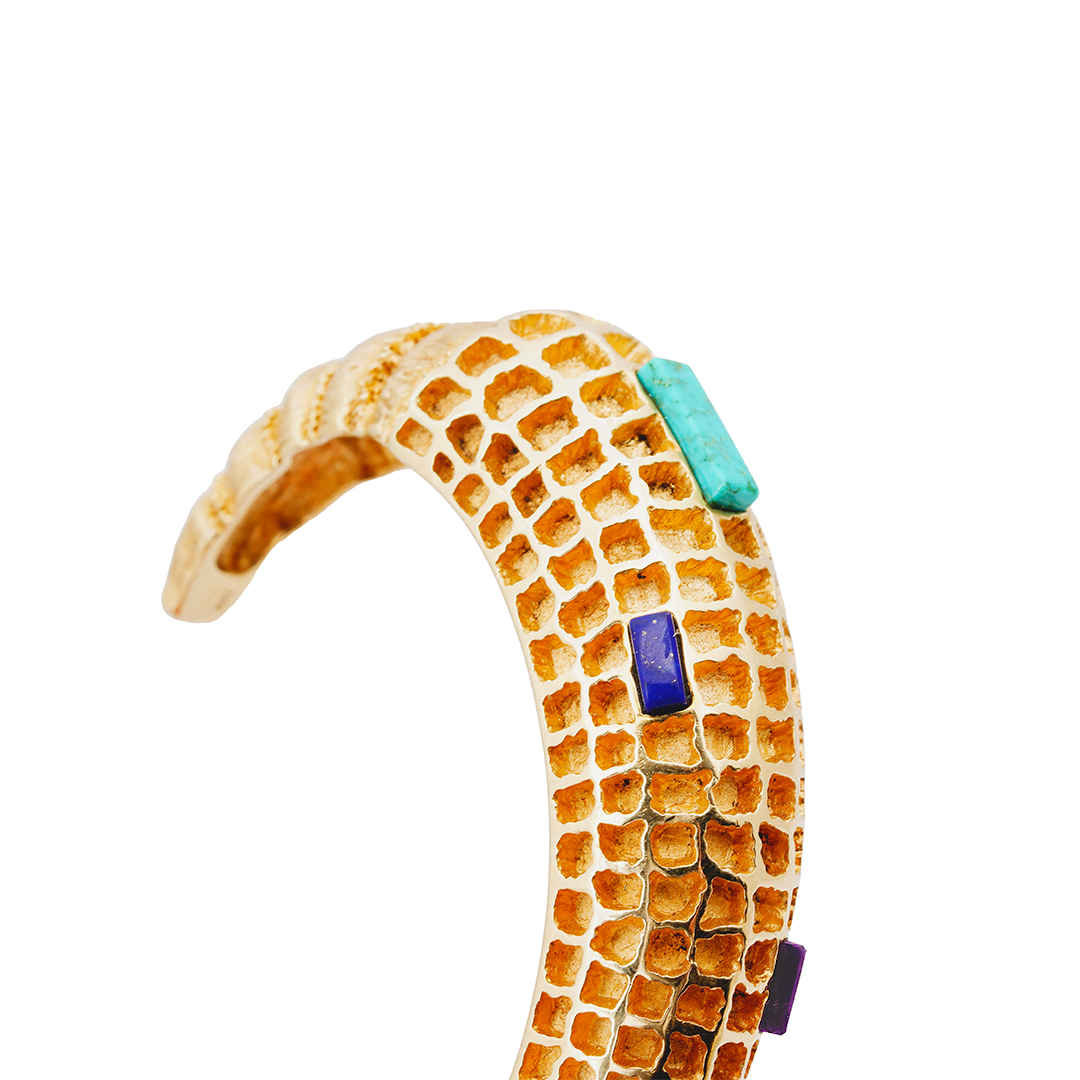James Little (b. 1947) is a master Navajo (Diné) jeweler celebrated for his innovative fusion of traditional Navajo symbolism with sleek, contemporary design. Raised in a remote region of the Navajo Nation in northeastern Arizona, Little grew up in a traditional family setting, herding sheep and observing his mother’s intricate rug weaving and his uncle’s silverwork—formative experiences that would deeply influence his artistic path.
Born with a severe hearing impairment, Little faced challenges in communication and formal education. However, after undergoing a series of ear operations in his late teens, he gained partial hearing and pursued his passion for silversmithing. He studied under the legendary Kenneth Begay at the Navajo Community College in Many Farms, Arizona, where he developed the foundational skills and artistic discipline that would define his career.
Under Begay’s mentorship, James Little refined a distinctive style that blends traditional Navajo motifs—such as Yei figures and woven patterns—with minimalist and modern forms. His jewelry is known for its clean lines, symbolic depth, and impeccable craftsmanship. Whether working in sterling silver or incorporating high-grade stones, Little’s pieces reflect both cultural heritage and refined artistry.
In 1979, Little was prominently featured in Arizona Highways magazine’s special Collector’s Edition, “The New Look in Indian Jewelry,” which spotlighted the emergence of contemporary Native American jewelry. This recognition solidified his place among the leading Native American jewelers of the Southwest.
Today, James Little is recognized as one of the foremost Native American silversmiths, with work featured in galleries, museum collections, and private collections worldwide. His legacy is built on a foundation of cultural pride, technical excellence, and timeless design, making his jewelry a significant part of the ongoing evolution of Navajo art.





 The Hopi Origin Story and Traditions originate with the powerful Emergence story. Each Hopi clan possesses different animals, which emerged from the third way of life and transitioned into the fourth. The Hopi people recount numerous tales of being bestowed corn kernel and water by Màasaw, the Master of the Third World. Upon entering the Fourth World, people were presented with corn. While many selected the largest cobs, the Hopi purposely chose the smaller cobs to showcase their humility. In response, the Great Spirit granted them their language and the group name “Hopi,” signifying peaceful little ones. Hopi life revolves around agriculture, particularly corn, which embodies humility, cooperation with the Earth God, respect, and stewardship of Earth.There are five brightly colored types of corn grown on the Hopi reservation still today. You may see jewelry, paintings, pottery, sculpture, and other media of corn. There are many different meanings behind this symbol: the six geographical directions:
The Hopi Origin Story and Traditions originate with the powerful Emergence story. Each Hopi clan possesses different animals, which emerged from the third way of life and transitioned into the fourth. The Hopi people recount numerous tales of being bestowed corn kernel and water by Màasaw, the Master of the Third World. Upon entering the Fourth World, people were presented with corn. While many selected the largest cobs, the Hopi purposely chose the smaller cobs to showcase their humility. In response, the Great Spirit granted them their language and the group name “Hopi,” signifying peaceful little ones. Hopi life revolves around agriculture, particularly corn, which embodies humility, cooperation with the Earth God, respect, and stewardship of Earth.There are five brightly colored types of corn grown on the Hopi reservation still today. You may see jewelry, paintings, pottery, sculpture, and other media of corn. There are many different meanings behind this symbol: the six geographical directions:
 Charles Loloma 14k gold and sterling silver “Corn Row” or “Ear Of Corn” bracelets from the 1970s.
Charles Loloma 14k gold and sterling silver “Corn Row” or “Ear Of Corn” bracelets from the 1970s.